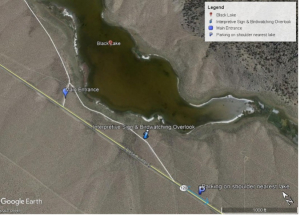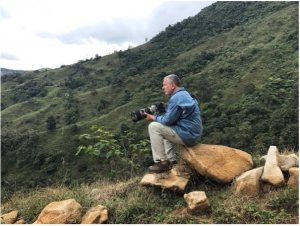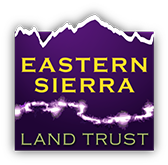

World Migratory Bird Day At Black Lake Preserve
May 8, 2021 - May 9, 2021
Eastern Sierra Land Trust &
Eastern Sierra Audubon Society
Celebrates World Migratory Bird Day
At Black Lake Preserve
Saturday May 8th & Sunday May 9th
What is World Migratory Bird Day?
Imagine you are on a road trip and navigating with a map you’ve used many times before. On this map are key stops that you know are reliable for food, fuel, and rest. However, what if one day you arrive to one of those key stops that you’ve been counting on and it’s gone? No place to rest, refuel the car, drink water, eat food… nothing to replenish yourself to continue the journey!
Like a key pit-stop, migration stops are extremely important for traveling birds. Even more, Black Lake Preserve—where 100% of its birds are migrants, is an extremely important place for bird in the eastern branch of the Pacific Flyway.
So why should you come to see them?
It is important for us to visit and see places that are unique, special, and that play a vital role for migrant species as it helps us understand the necessity and benefit of preserving with purpose.
“It is a privilege for us to even see it and experience it.” – Santiago Escruceria
We invite you to celebrate the importance of migratory birds passing through the Eastern Sierra on the weekend of May 8th-9th for a self-guided birding tour at Black Lake Preserve.
Below we share with you all you need to be a sharp birder, such as:
- Importance of Migratory Birds and their preservation
- Quick how-to on recording your findings
- Directions & etiquette
- Attached site specific bird list
Why are Migratory Birds important? Migratory birds are essential to the habitats in which they return to seasonally for mating and feeding and nesting. Birds play a vital role in pollination, food production, food sources, and pest regulation. It is crucial that the habitats which these migrating birds return to from their long journeys, are healthy habitats.
Why is Black Lake Preserve an important habitat? Black Lake Preserve was donated to ESLT by Michelle Browner in 2014 and with help from Natural Resources Conservation Service (NRCS), Black Lake Preserve is permanently protected from certain uses including development and subdivision. This means it will remain as open space habitat in perpetuity. As well, Black Lake Preserve’s wetlands are an important stopover for migratory birds, earning it a designation by Audubon Society as an “Important Bird Area.”
Birding and recording your findings:
- Because this is an Important Bird Area, we would love for you to share with us the birds you see and record your data to Cornell Lab of Ornithology in a citizen science effort.
- Use a pencil & paper or try eBird if you have a smartphone! A how-to for using the eBird birding app can be found at here.
- If you take pictures or see anything exciting, tell us and we’ll share it on the ESLT website! Send your findings & photos to .

How to get to Black Lake from Bishop, CA:
- Drive 34 miles north on Highway 6 to the town of Benton
- Turn left (west) on Highway 120
- Go through the historic town of Benton Hot Springs and reach the intersection of Benton Crossing Road and Highway 120
- In about a mile, will reach two dirt roads—both are accessible
Once you’ve arrived:
- Park along Hwy 120 on the side nearest the lake and walk the dirt road to the turn-out at the end. Here you will reach the interpretive sign & overlook.
- Driving the dirt road between the Hwy and the Birdwatching Overlook is not recommended (narrow, soft sand and full of car scratchers).
- From the overlook, you can read the interpretive sign—a watercolor map with a trail indicated (the trail is a winding footpath that follows old cattle trails)
Birding Etiquette and Safety Protocols:
- Please leave your furry friends at home or keep them on leash and well-behaved
- Keep noise levels down to avoid startling wildlife
- Using binoculars and avoid getting too close to wildlife
- Be kind to fellow birders
- Please wear a mask when passing by other birders
- Treat Black Lake Preserve like your own migratory habitat and keep it clean!
What to Bring:
- Hat
- Water
- Snack
- Sunscreen
- Binoculars
- Bird identification book (i.e. Sibley Bird Guide)
 Please Note: This is a self-guided event so you are welcome to come either day at any time.
Please Note: This is a self-guided event so you are welcome to come either day at any time.
However, if you are comfortable and interested, Santiago Escruceria, Eastern Sierra Audubon’s President, will be at Black Lake on May 8th at 8am offering some guided tours if you are interested – mask wearing is highly encouraged for these to keep folks safe and comfortable!
Share this with family and friends!
Please check back soon for new opportunities to get out, explore, and get involved in our conservation efforts here in the Eastern Sierra.

